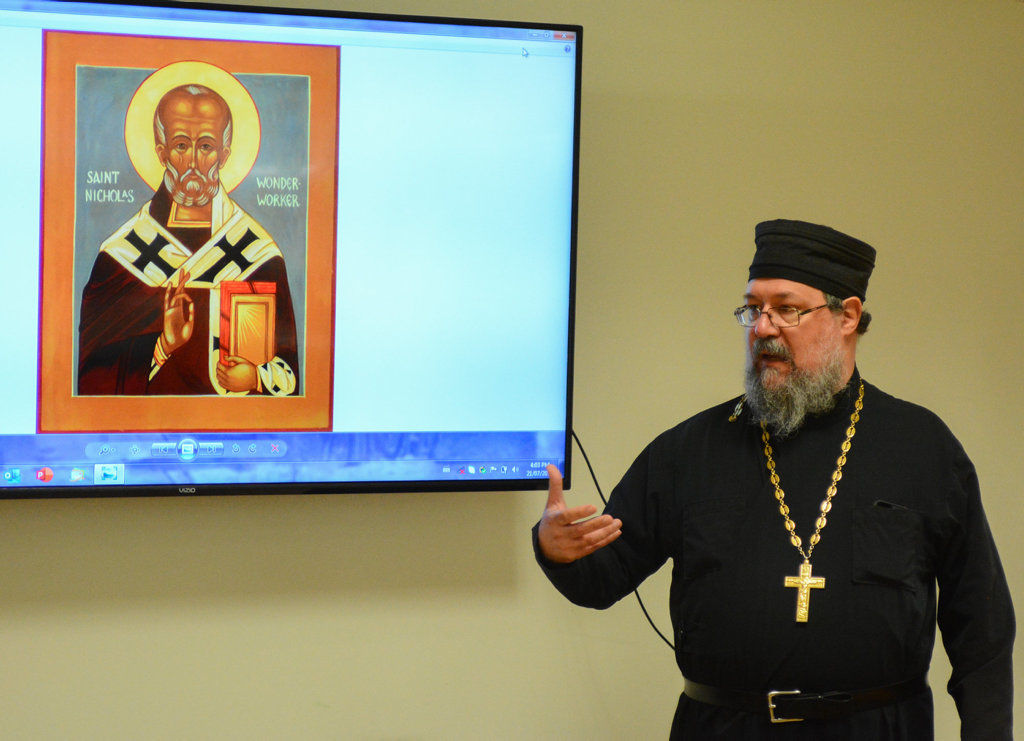
We must not say that an icon should be painted according to contemporary methods. in iconography) – if we paint in a free manner, expressing your vision, your style, this is not going to be an icon any more. Probably the brightest illustration to this approach was given by Khristina Prokhorova in one of her interviews: “If someone will try to rewrite the Gospel in a contemporary language, it is not going to be the Gospel any more, but religious literature. These masters do their best to fervently follow old models, traditions and canons. Among these are Alexander Stalnov, Valentina Zhdanova, Ivan Kusov, Khristina Prokhorova. First of all, we have to mention the name of a staff preservationist of the Russian Museum, Sergei Golubev (1947-2008), who educated many generations of iconographers in the Icon Painting School of the Saint Petersburg Spiritual Academy. The approach to studying was rather conservative.

Saint Petersburg’s school of iconography started in the 1980s with an interest in iconography rising out of restoration specialists.

Zinon has has gone through all the epochs of Christian art, although, in reverse order. The connection with style has always been strong in Fr. Now he works exclusively in encaustic, a method of painting with hot wax, using early Christian prototypes. Zinon started in 1970, emulating the works of Nesterov and Vasnetsov, after which he delved into 15th century style and Byzantine styles of various epochs. None of these artists remained a mere talented copier of medieval art, but found his or her own way in the profession, developing their own voice.įr. This generation of artists had not only been rediscovering iconography, but also traditional techniques of egg tempera, natural pigments, gesso (levkas) recipes and varnishes, all of which are now taken for granted. Without knowing any better, they began by pouring “little lakes” of paint onto the surface of boards and letting those puddles fuse with the underlying layer. Only after a period of time had passed, artists stopped transferring drawings using tracing paper and began to fully exploit the possibilities of egg tempera. Zinon at Danilov Monastery in Moscow during its restoration to commemorate 1000 years of the Baptism of Russia in 1988. Almost all of them, in varying degrees, began with Fr. Others, like Andrey Davydov and Alexander Sokolov, became interested in iconography while studying in art colleges. Some, like Alexandre Lavdansky, Alexander Chashkin and Anatoly Eiteneier came from the Avant Guard movement. All of them came to the icon by different paths. Most of them are muscovites, who started their creative careers in the 1970s and early 1980s, when icon painting was considered religious propaganda. Of course, the icon is primarily made for a church, monastery and prayer, but at the same time it is a work of art, and maybe it is the best of what is now in our art,” said the archbishop.įirst the story of contemporary Russian iconography, we have to look at the works of the older generation of iconographers. “Icons should not only be painted for churches or monasteries, but spread throughout Russia. At the opening of the exhibit, Archbishop Pankraty stated, “contemporary icons have to be studied, collected, preserved, and used to teach future iconographers.” This idea led to the exhibition. A large portion is planned to be transformed into a larger scale project, the Museum of Contemporary Russian Icons.

The idea for the exhibition was conceived upon the untimely passing away of one of the leading iconographers of Moscow – Alexander Sokolov (1960-2015). Art critic Anna Chukina, Alexander Lavdansky (middle) and Andrey Bubnov


 0 kommentar(er)
0 kommentar(er)
